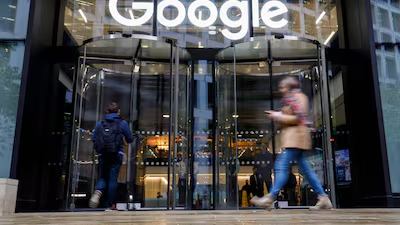Fintech
The Next Potential $3 Trillion Club Member: Can Alphabet Follow Apple, Nvidia, and Microsoft?
03 November 2024
|
Zaker Adham
Currently, seven companies listed on American stock exchanges have valuations exceeding $1 trillion, yet only three giants—Apple, Nvidia, and Microsoft—have crossed the $3 trillion threshold. Now, Alphabet Inc., the parent of Google, YouTube, and Waymo, is fast emerging as a strong contender in the race to join this elite club.

Alphabet's AI-Powered Transformation
Alphabet has made substantial investments in artificial intelligence (AI) as part of its strategy to diversify and enhance its services. Since Microsoft’s significant investment in OpenAI, which integrates AI models into Bing and other platforms, Alphabet has bolstered its own AI capabilities to protect Google Search’s dominance, which still commands a 90% global market share.
The Gemini AI Initiative
In 2023, Alphabet launched the Gemini family of AI models, now embedded across its suite of products. With over 2 billion monthly users across services like Google Search, YouTube, and Workspace, these AI enhancements elevate user experiences by providing swift, AI-generated answers and summaries. For example, Gemini powers AI Overviews, a feature in Google Search that delivers quick, reliable responses, combining text, images, and third-party links.
Image Suggestion: Display an image of Google’s headquarters or its AI-powered search interface to emphasize its integration of Gemini AI.
Google Cloud’s Rapid Growth and AI Potential
Google Cloud stands out as Alphabet’s fastest-growing division, achieving a record $11.3 billion in Q3 2024, a 34.9% year-over-year increase. This momentum highlights the surge in demand for accessible, high-performance computing power—something Google Cloud addresses by clustering Nvidia’s GPUs and Alphabet’s custom tensor processing units (TPUs) within its data centers.
AI-Driven Solutions for Businesses of All Sizes
The prohibitive cost of AI technology, especially high-powered GPUs, makes Alphabet’s AI infrastructure a valuable solution for companies worldwide. Through Google Cloud, businesses gain access to over 130 ready-made large language models (LLMs), including Gemini. Major clients, like LG AI Research, report substantial gains, including a 50% improvement in processing speeds and a 72% reduction in operating costs.
Image Suggestion: Use an image of a Google Cloud data center or high-tech GPU clusters to emphasize the infrastructure supporting Google Cloud.
Pathway to a $3 Trillion Valuation
Alphabet recently posted a quarterly earnings-per-share (EPS) of $2.12, a 36.7% increase from the previous year. Its trailing twelve-month EPS stands at $7.54, giving it a price-to-earnings (P/E) ratio of 23.8—substantially lower than its trillion-dollar peers, which average a P/E ratio of 40.9.
Valuation Potential and Market Confidence
For Alphabet to achieve a P/E ratio comparable to its tech rivals, its stock would need to increase by around 72%, potentially propelling its market cap to $3.6 trillion. Even a modest increase to match the Nasdaq-100 technology index’s P/E average could see Alphabet reaching the $3 trillion milestone by 2025, driven by its expected earnings growth of 13.5%.
Legal Battles Could Shape Alphabet’s Future
Alphabet faces regulatory hurdles following a 2020 antitrust lawsuit by the U.S. Department of Justice (DOJ), which accused it of anti-competitive practices. A recent judicial ruling in favor of the DOJ could have significant implications, from financial penalties to potential operational changes. Although a forced breakup is unlikely, such a development would undoubtedly influence Alphabet’s long-term valuation and strategy.
Investment Outlook: Alphabet’s Potential for Long-Term Growth
Despite regulatory uncertainty, many analysts remain optimistic about Alphabet’s future. Should Alphabet overcome its legal challenges, it has the potential to accelerate growth in its AI and cloud divisions, paving the way for a $3 trillion valuation.
Conclusion: A Smart Buy for Forward-Looking Investors?
Alphabet’s current valuation presents a compelling opportunity for investors seeking growth in the AI-driven tech landscape. With a robust product lineup, expanding cloud infrastructure, and AI integration across its services, Alphabet stands well-positioned to achieve a valuation of $3 trillion in the coming years.
Image Suggestion: Use a graphic illustrating Alphabet’s stock performance trend or a comparison chart of tech giants in the trillion-dollar club to visually support the article’s analysis.

